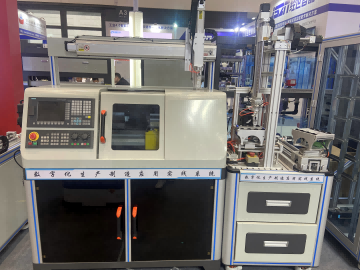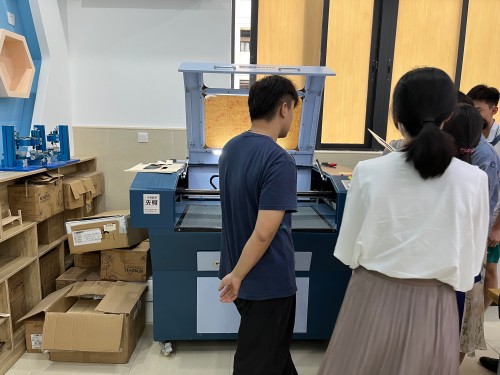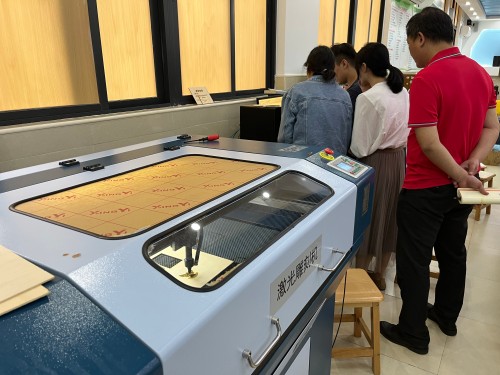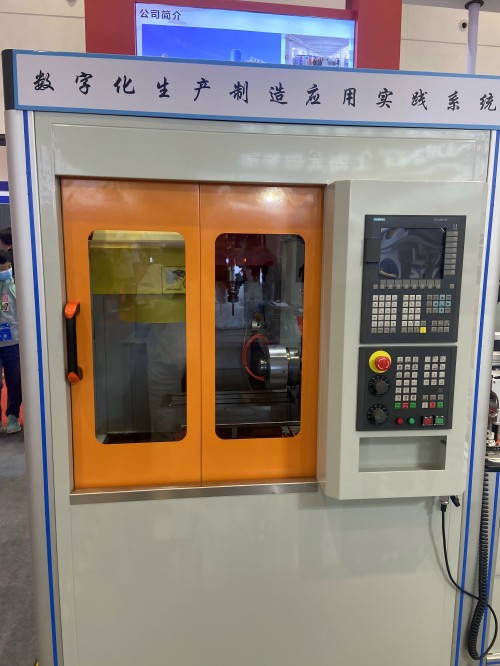Blog
Xendoll has 22 years of experience in the production of small machine tools. We will help you choose the suitable machine and share our experience in CNC machining with you.
 Nov 06, 2024
Nov 06, 2024
 Xendoll
Xendoll
 919
919
With the continuous development of CNC technology, five-axis machining has become increasingly important in manufacturing, particularly for high-precision and complex parts. Five-axis machine tools are indispensable in industries requiring intricate geometries, as they offer superior capabilities compared to traditional three-axis machines. Desktop five-axis machine tools, a branch of this technology, have gained popularity due to their compact size, flexibility, and relatively low cost, making them ideal for educational and experimental purposes. However, despite their advantages, desktop five-axis machines still face challenges in machining accuracy due to their size and structure. This article explores the advantages and disadvantages of desktop five-axis machine tools from a CNC teaching perspective, while offering recommendations for improving machining precision.

Efficient Machining of Complex Parts
Five-axis machines can simultaneously move along five different axes, allowing them to process complex geometries that are difficult or impossible to machine with traditional three-axis systems. This reduces the need for multiple setups, minimizing alignment errors during re-clamping, which can otherwise impact accuracy. The ability to perform multi-directional cuts in one setup ensures high precision and efficiency, especially when working on complex or intricate components.
Reduction in Tool Path Deviations
On a five-axis machine, the tool can maintain the optimal cutting angle throughout the process by adjusting its position relative to the workpiece in multiple directions. This minimizes tool deflection, reduces friction, and improves surface quality and accuracy. This capability is particularly valuable when machining parts that require high surface finish and tight tolerances.
High Automation and Precise Control
Desktop five-axis machines are often equipped with advanced CNC systems and servo drives that provide precise control of the machine’s movements at the micron level. These systems can maintain tight tolerances, improving machining accuracy, especially when producing parts that require high-precision positioning. For educational purposes, these systems offer the opportunity for students to gain hands-on experience with sophisticated control technologies, further enhancing the teaching process.
Ideal for Educational and Experimental Use
From a CNC teaching perspective, desktop five-axis machine tools provide an excellent learning platform. Their small size and user-friendly interfaces make them suitable for student experiments and practical exercises. The relatively low cost compared to industrial-grade machines allows educational institutions to provide more opportunities for students to learn about five-axis machining, a skill increasingly sought after in the manufacturing industry.

Insufficient Machine Rigidity
The relatively small size of desktop five-axis machines leads to lower rigidity compared to larger, industrial machines. During high-load machining, vibrations may arise, potentially compromising machining accuracy. Even minor vibrations can disrupt tool trajectories, resulting in machining errors, particularly during high-precision operations.
Structural Limitations and Error Propagation
Due to their compact structure, desktop five-axis machines may use lighter materials, which can be more prone to thermal expansion and deformation. This can lead to dimensional inaccuracies, especially when the machine operates for extended periods or under heavy load. The accumulation of these small deformations over time can significantly affect machining precision.
Influence of Temperature Variations
Smaller machine tools often have poorer thermal stability. Temperature fluctuations during machining, such as those caused by the heat generated from high-speed cutting or prolonged operation, can lead to thermal expansion and shape deformation of machine components. This can impact both the accuracy of the machine’s movements and the precision of the finished part.
Limited Positioning Accuracy
While five-axis machines excel at complex part machining, their smaller size can limit their positioning accuracy and repeatability, especially when subjected to high cutting forces or when processing intricate parts. Precision errors in part dimensions can accumulate, particularly in continuous or multi-phase machining operations.

Enhancing Machine Rigidity
Improving the rigidity of the machine tool is key to enhancing machining precision. This can be achieved by optimizing the machine's structural design and using higher-strength materials to increase stiffness. Additionally, increasing the number of support points and improving the base design can reduce vibrations and improve stability during high-speed machining.
Optimizing Machining Process and Tool Selection
Selecting the right tools and optimizing cutting parameters are essential for improving machining precision. On desktop five-axis machines, it is crucial to choose tools with suitable material properties and geometries to reduce cutting forces and improve cutting stability. By adjusting cutting speeds, feed rates, and depth of cut, operators can minimize vibrations and deformation, leading to better dimensional accuracy.
Implementing Effective Temperature Control
Temperature fluctuations are a significant factor affecting machining accuracy. To mitigate these effects, temperature control measures should be implemented. Machine tools can be equipped with temperature sensors to monitor the temperature in real-time, allowing operators to make adjustments to maintain optimal thermal conditions. Additionally, using thermally stable materials and designing for better heat dissipation can help reduce the impact of temperature changes on precision.
Routine Calibration and Maintenance
Regular calibration and maintenance are critical to ensuring consistent machining accuracy. This includes checking and recalibrating the machine’s movement systems, geometric accuracy, and feedback loops. Routine checks on the electrical systems, motors, and lubricants, along with timely replacement of worn-out parts, are essential for maintaining machine precision over time.
Using High-Precision CNC Systems
A high-precision CNC system is crucial for improving machining accuracy. Advanced CNC systems can more accurately control each axis's motion and adjust for any errors in real-time. In educational settings, equipping machines with such systems allows students to practice and develop a deeper understanding of the importance of precise motion control, thus enhancing both their technical skills and their understanding of high-precision machining processes.

Desktop five-axis machine tools offer significant advantages in machining complex parts and serve as an excellent teaching tool for students to learn advanced CNC technologies. However, due to their smaller size and structural limitations, these machines face challenges in achieving high machining accuracy, particularly in terms of rigidity, thermal stability, and positioning precision. By improving machine rigidity, optimizing cutting parameters, implementing effective temperature control, and performing regular calibration, machining accuracy can be enhanced. In CNC education, it is essential to foster a deep understanding of these factors to prepare students for the challenges of high-precision machining and to equip them with the skills necessary for working with advanced manufacturing technologies.
We are a CNC machine tool manufacturer with over 20 years of experience. Our products include small lathes, milling machines, drilling machines, grinding machines, and 2 to 5-axis CNC machines, exported to over 20 countries. We offer one-piece orders, ideal for schools, CNC training centers, CNC enthusiasts, and small machine tool dealers. Comprehensive technical support and after-sales service are available. Contact us for inquiries!https://www.xendolltools.com/



 Show all our samples
Show all our samples
 Provide you with a free quote
Provide you with a free quote
 Answer all the questions you may have
Answer all the questions you may have
 Guided installation and other options
Guided installation and other options